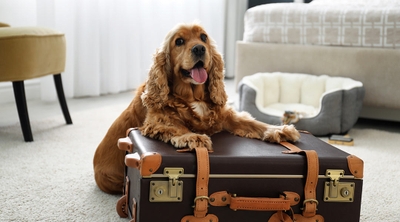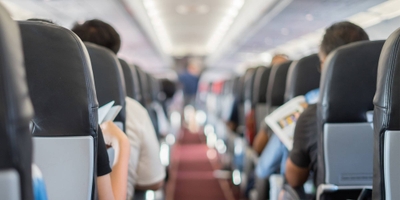What to know about moving overseas with pets
3 min read
Moving to another country is difficult enough when your relocation plans don’t include a four-legged family member. Moving with a pet can make the process even more challenging. Although there are no universal guidelines for moving internationally with pets, there are some common requirements. We spoke with Russell Hartstein, Los Angeles-based certified dog behaviorist and trainer, to find out what they are and get his tips for making an international move easier on your pet.
What must I check before moving abroad with pets?
When you’re moving overseas with a cat or dog, there are a few things you need to check:
- The laws in the country where you’re moving.
- The laws in the countries where you have a layover or plan to stop along the way.
- The requirements of your transportation provider (e.g., airline, train, etc.).
What are the requirements for moving pets to another country?
Frequent requirements for moving pets overseas include:
- Health certificate: Your veterinarian typically must verify your pet’s health status within a certain number of days before traveling.
- Quarantine: After arriving in your new home country, your pet may need to isolate before you can take them home with you.
- Vaccines: When moving pets abroad, many countries require them to have current rabies and other vaccines before entering.
- Microchip: Many countries require pets to have a microchip to be tracked if they get lost.
- Animal characteristics: Some countries prohibit certain species and breeds of animals. There may also be restrictions based on your pet’s age.
Tips for moving abroad with pets
While moving internationally with pets is completely doable, it can be stressful for you and your pet. Following these tips, says Hartstein, can help you prepare yourself, make the move as smooth as possible, and keep your pet stress-free.
Understand the laws and start the process early
It’s not just the country’s and locality’s rules you need to understand. Check with your apartment building, co-op, or homeowner’s association to find out if they have pet restrictions. Getting all your paperwork in order takes time, so don’t wait until the last minute.
Prepare a pet resumé
Hartstein says having a dossier on your furry friend can help reduce the likelihood that the country will turn your pet away. Include their medical, training, and behavior history, as well as any certifications. Incorporate anything that shows you have a healthy, well-behaved pet.
Train them
If you’re moving overseas with a dog, it should be well-trained so it doesn’t get stressed during your journey. Your dog should be comfortable in its crate and able to go potty on cue.
Consider supplements or medication
If your pet fears flying, driving, or boating, talk to your vet about supplements to help them relax. For more severe cases, medication may help them reach their destination without an anxiety attack.
Manage their food and water intake
Avoid food for several hours before you leave to prevent unnecessary potty breaks. Keeping your pet hydrated throughout your trek is vital to its health.
It’s also important to keep your pets comfortable when moving overseas. Bring your pet’s favorite items (e.g., blankets, bed, toys, treats) so they’re not scared.
Work with a pet relocation company
They help clients move pets internationally every day. These companies can help you navigate the process so you don’t miss anything. Just make sure they’re reputable.
When traveling with your pet, having a customized pet insurance policy can ensure they are protected in case of an accident or injury. Learn more about how pet insurance works.






